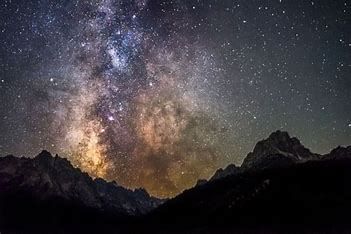UPSC Daily Current Affairs- 23rd March 2024 | Current Affairs & Hindu Analysis: Daily, Weekly & Monthly PDF Download
| Table of contents |

|
| GS-I |

|
| Netravati River |

|
| Galapagos Islands |

|
| GS-II |

|
| Enforcement Directorate (ED) |

|
| GS-III |

|
| Dark Sky Reserve |

|
| Bangalore Water Crisis |

|
| Challenges Faced by the Gig Workers |

|
GS-I
Netravati River
Subject: Geography

Why in News?
The principal bench of the National Green Tribunal (NGT) in New Delhi has initiated action on the Netravati Waterfront Promenade Development Project in Mangaluru.
About Netravati River:
- Origin:
- The Netravati River originates between Kudremukh and Ballalaryan Durga in the Dakshina Kannada district of Karnataka.
- Initially, it flows in a North-South direction until reaching Gohattu, where it changes course to the West. From there, it flows in an East-West direction until it reaches its outfall into the Arabian Sea near Mangalore.
- Tributary: A significant left-bank tributary of the Netravati River is the Kumaradhara, which joins near the village of Uppinangadi.
- Climate: The climate in the Netravati River basin is characterized by heavy rainfall, high humidity, and oppressive weather during the hot season.
What is National Green Tribunal?
- It has been established under the National Green Tribunal Act, 2010.
- It is mandated to make disposal of applications or appeals finally within 6 months of the filing of the same.
- Composition:
- It comprises the Chairperson, the Judicial Members and the Expert Members.
- They shall hold office for a term of 5 years and are not eligible for reappointment.
- The Chairperson is appointed by the Central Government in consultation with the Chief Justice of India (CJI).
- A Selection Committee shall be formed by the central government to appoint the Judicial Members and Expert Members.
- There are to be at least 10 and a maximum of 20 full-time Judicial members and Expert Members in the tribunal.
- New Delhi is the Principal Place of Sitting of the Tribunal and Bhopal, Pune, Kolkata and Chennai shall be the other four places of sitting of the Tribunal.
Source: DTE
Galapagos Islands
Subject: Geography

Why in News?
The Galapagos Islands, a beautiful destination and a UNESCO World Heritage Site, is facing a pressing issue: rising visitor numbers threatening the delicate balance of this unique ecosystem.
About Galapagos Islands:
- Location: It is situated in the Pacific Ocean. It is distributed on either side of the Equator with an underwater wildlife spectacle with abundant life.
- Repeated volcanic eruptions helped to form the rugged mountain landscape of the Galápagos Islands.
- In comparison with most oceanic archipelagos, the Galapagos are very young with the largest, and youngest islands, Isabela and Fernandina, with less than one million years of existence and the oldest islands, Española and San Cristóbal, somewhere between three to five million years.
- Mount Azul, at 5,541 feet, is the highest point of the Galapagos Islands.
- Climate: It is characterized by low rainfall, low humidity, and relatively low air and water temperatures.
- It is designated as a UNESCO World Heritage site in 1978.
- Biodiversity:
- The Galápagos are best known for many species are endemic, as they are not found anywhere else in the world.
- These include the giant Galápagos tortoise (Chelonoidis nigra), the marine iguana (Amblyrhynchus cristatus), the flightless cormorant (Phalacrocoraz harrisi), and theGalápagos penguin.
- The Galápagos penguin (Spheniscus mendiculus) is the only penguin species to live in the Northern Hemisphere.
Source: Times Now
GS-II
Enforcement Directorate (ED)
Subject: Polity and Governance

Why in News?
The Enforcement Directorate (ED) recently conducted fresh raids in at least five places across West Bengal, in connection with the alleged multi-crore school recruitment scam in the state.
About Enforcement Directorate (ED):
- It is a multi-disciplinary organization mandated with the investigation of offence of money laundering and violations of foreign exchange laws.
- It was established in 1956 as an ‘Enforcement Unit’ under the Department of Economic Affairs. Later, in 1957, this unit was renamed the ‘Enforcement Directorate’.
- It is under the administrative control of the Department of Revenue (under the Ministry of Finance) for operational purposes.
- ED is responsible for enforcement of the Prevention of Money Laundering Act, 2002 (PMLA), Foreign Exchange Management Act, 1999 (FEMA), and Fugitive Economic Offenders Act, 2018 (FEOA).
- ED has the power to attach the assets of the culprits found guilty of the violation of FEMA. It has also been empowered to undertake, search, seizure, arrest, prosecution action, and survey, etc. against the offences committed under PMLA.
- Appointment of Director of ED: The ED Director is appointed by the central government on the recommendation of a committee:
- chaired by the Central Vigilance Commissioner and
- members comprising of Vigilance Commissioners, Home Secretary, Secretary DOPT and Revenue Secretary.
Source: Hindustan Times
GS-III
Dark Sky Reserve
Subject: Science and Technology

Why in News?
By the end of 2022, India will establish the country’s first Dark Sky Reserve in the cold desert regions of Ladakh, Dr Jitendra Singh, Minister of State (Independent charge) for Science and Technology, announced.
Background:-
- India is still in the process of filing its nomination to IDSA.The Ladakh Union Territory administration is leading the efforts in establishing the country’s first Dark Sky Reserve.
About Dark Sky Reserve
- Definition of Dark Sky Reserve:
- A Dark Sky Reserve refers to either public or private land characterized by an exceptional nocturnal environment, showcasing pristine starlit nights.
- This environment has been carefully developed to ensure the prevention of light pollution, which can obscure celestial views.
- Criteria by the International Dark Sky Association (IDSA):
- The International Dark Sky Association (IDSA) outlines that these reserves consist of two key areas:
- A core area, which must meet specific criteria for sky quality and natural darkness. This core area serves as the focal point for preserving the pristine night sky.
- A peripheral area surrounding the core, which plays a supportive role in maintaining the dark sky preservation efforts within the core zone.
- Responsibility and Development:
- Development within a Dark Sky Reserve is undertaken responsibly, with a keen focus on preventing light pollution.
- This responsible development ensures that the natural darkness and stellar visibility are preserved for both present and future generations to enjoy.
How does a site become a ‘Dark Sky Reserve’?
- Individuals or groups can nominate a site for certification to the International Dark Sky Association (IDSA). There are five designated categories, namely International Dark Sky parks, communities, reserves, sanctuaries and Urban Night Sky Places.
- Between 2001 and January 2022, there have been 195 sites recognised as International Dark Sky Places globally, the IDSA said.
- The IDSA considers a piece of land suitable for dark sky place only if it is either publicly or privately owned; is accessible to the public partially or entirely during the year; the land is legally protected for scientific, natural, educational, cultural, heritage and/or public enjoyment purposes; the core area of the land provides an exceptional dark sky resource relative to the communities and cities that surround it and the land offers prescribed night sky brightness either for a reserve, park or sanctuary.
Why was Ladakh chosen for the project?
- Location and Setting:
- The Hanle Dark Sky Reserve (HDSR) is planned to be positioned at an elevation of 4,500 meters above sea level, within the Changthang Wildlife Sanctuary.
- Ladakh, where the HDSR will be situated, is characterized by its unique cold desert landscape, positioned at about 3,000 meters above sea level.
- Ladakh features high mountainous terrain and experiences long, harsh winters, with temperatures dropping to as low as minus 40 degrees Celsius, rendering large parts of the region inhospitable.
- Environmental Factors:
- Ladakh's arid conditions, limited vegetation, high altitude, and vast areas with sparse populations contribute to making it an ideal setting for establishing long-term astronomical observatories and dark sky areas.
- Objective of the Dark Sky Reserve:
- The primary aim of the proposed Dark Sky Reserve is to encourage astronomy tourism in a sustainable and eco-friendly manner.
- Scientific techniques will be employed to safeguard the night sky from the escalating threat of light pollution, ensuring its preservation for future generations.
- Sustainable Development:
- The development of the Hanle Dark Sky Reserve will prioritize sustainability and environmental consciousness, emphasizing the balance between promoting tourism and preserving the natural ecosystem.
Source: Indian Express
Bangalore Water Crisis
Subject: Environment and Ecology

Why in News?
An acute drinking water crisis in Bengaluru has been creating international headlines for the past few days.
Background:
- Karnataka Chief Minister said Bengaluru was facing a shortage of 500 million litres of water every day, which is about a fifth of the city’s daily total demand.
Reasons behind water crisis:
- Monsoon Impact on Karnataka:
- During the previous year's monsoon, Karnataka experienced a rainfall deficiency of 18 percent below the normal levels.
- The subsequent post-monsoon period also failed to bring substantial rainfall to the state.
- Similar to many other regions in the country, Karnataka heavily relies on the monsoon for a significant portion of its annual precipitation.
- A shortfall in monsoon rainfall invariably leads to water scarcity issues, exacerbating water stress across the state.
- Reservoir Water Levels:
- As a direct consequence of the inadequate rainfall, Karnataka's reservoirs are currently holding water at only 26 percent of their full capacity.
- Recent data from the Central Water Commission underscores the severity of the situation, indicating the critical depletion of water resources in the state's reservoirs.
- Aquifer Dynamics in South India:
- South India possesses a distinct aquifer system characterized by rocky formations.
- Unlike aquifers in other regions, those in South India have limited water retention capabilities and tend to deplete rapidly during dry spells.
- However, they also recharge relatively quickly, contributing to a dynamic water cycle in the region.
- Contrast with North Indian Aquifers:
- In contrast, aquifers in north India exhibit greater water storage capacities.
- Even in the face of reduced rainfall, states like Bihar and Uttar Pradesh have not encountered comparable water scarcity issues due to their aquifers' ability to sustain water demand over extended periods.
- Once filled, aquifers in northern regions can retain sufficient water to meet demands for multiple years, highlighting a fundamental difference from their southern counterparts.
Dealing with Shortage
- Factors Affecting Water Availability in Bengaluru:
- Unregulated construction, destruction of lakes, hindrances to natural underground water flow, and climate change all contribute to the scarcity of water in Bengaluru.
- However, these factors do not appear to be the immediate causes of the current shortage.
- Immediate Trigger: The ongoing water shortage is primarily attributed to seasonal fluctuations in rainfall and the state's failure to develop adequate capacities to manage such variations effectively.
- Need for Capacity Development: States must focus on enhancing their capabilities to address disruptions caused by various factors through strategic planning and implementation.
- Value of Water:
- It is crucial to recognize the value of water as a finite resource rather than a free commodity.
- There is a necessity to incentivize low or optimal consumption while discouraging wastage to ensure sustainable water management practices.
Source: Indian Express
Challenges Faced by the Gig Workers
Subject: Economy

Why in News?
A study was conducted by the People’s Association in Grassroots Action and Movements, and the Indian Federation of App-based Transport Workers, which highlights the challenges encountered by Gig Workers such as app-based cab and delivery drivers/persons in India.
Background:
- The long hours, coupled with the stress of navigating traffic and meeting tight deadlines, have a significant impact on physical health, said the report, titled ‘Prisoners On Wheels? Report on Working and Living Conditions of App-based Workers in India’.
About Gig Workers:
- They are individuals who work on a temporary, flexible basis, often for multiple clients or companies, performing tasks or providing services.
- They are typically independent contractors rather than traditional employees, which means they have more control over when, where, and how they work.
Key highlights of the study:
- Long Working Hours: Nearly one-third of app-based cab drivers operate for more than 14 hours daily, with over 83% working over 10 hours and 60% exceeding 12 hours. Among them, over 60% of drivers from Scheduled Castes (SC) and Scheduled Tribes (ST) work for over 14 hours daily, highlighting social disparities.
- Income Disparities: More than 43% of gig workers earn less than Rs 500 a day or Rs 15,000 monthly after deducting all costs. Additionally, 34% of app-based delivery persons earn less than Rs 10,000 monthly. These income variations contribute to existing social inequalities.
- Financial Strain: A significant majority of cab drivers (72%) and delivery persons (76%) struggle with managing expenses, with 68% of cab drivers' overall expenses surpassing their earnings, potentially leading to debt-like situations.
- Dissatisfaction with Fares:
- Over 80% of app-based cab drivers express dissatisfaction with the fares offered by companies, while over 73% of delivery persons are unhappy with their rates.
- Employers reportedly deduct between 31-40% of the commission rate per ride of drivers, significantly higher than the officially claimed 20%.
- Physical Exhaustion and Risks: Demanding work hours result in physical exhaustion, raising the risk of road traffic accidents, especially due to the pressure of the ‘10-minute delivery at the doorstep’ policy of certain e-commerce platforms.
- Challenges in Work Conditions:
- Drivers and delivery persons face difficulties in taking regular days off, with less than 37% belonging to a union.
- Issues like ID deactivation and customer misbehavior negatively impact their effectiveness at work, with a significant majority reporting negative effects from customer behavior.
- Recommendations for Regulations:
- The report recommends regulations to ensure fair and transparent payment structures, protecting gig workers from underpayment or exploitation.
- It suggests payment of a minimum wage to platform workers to guarantee a fixed component in their income.
- Platforms should address rising concerns of income insufficiency and respond to worker demands by reducing commission rates per transaction and providing separate payments for workers' fuel bills.
- Stronger social security measures for app-based workers and government oversight on the fairness of algorithms and mechanisms used by platforms are also recommended.
Challenges in providing social security benefits to gig workers:
- Blurred Employment Boundaries:
- The lines between self-employment and dependent employment are blurred in the gig economy, complicating the determination of company obligations towards gig workers.
- Workers have the freedom to work for multiple firms or quit at will, further complicating the situation.
- Flexibility in the Gig Economy:
- The gig economy is known for its flexibility, allowing workers to decide when, where, and how much they work.
- Crafting social security benefits that align with this flexibility and cater to the diverse needs of gig workers poses a significant challenge.
- Challenges in Social Security Systems:
- Traditional social security systems rely on employer and employee contributions, with employers usually bearing a substantial portion of the costs.
- In the gig economy, where workers often operate as self-employed, identifying suitable funding mechanisms becomes intricate.
- Data Sharing and Coordination:
- Efficient data sharing and coordination among gig platforms, government agencies, and financial institutions are vital to accurately evaluate gig workers’ earnings, contributions, and eligibility for social security programs.
- However, due to gig workers' involvement with multiple platforms or clients, coordinating and ensuring proper coverage become challenging.
- Awareness and Understanding:
- Many gig workers may lack a comprehensive understanding of their rights and entitlements concerning social security benefits.
- Raising awareness about these rights presents a significant challenge in itself.
Way Forward:
- Although the Code on Social Security, 2020, contains provisions for gig workers, the rules are yet to be framed by the States and not much has moved in terms of instituting the Board. These should thus be taken up expeditiously by the government.
- The UK has instituted a model by categorising gig workers as “workers,” which is a category between employees and the self-employed. This secures them a minimum wage, paid holidays, retirement benefit plans, and health insurance.
- Strong support for gig workers should come from the gig companies that themselves benefit from this agile and low-cost work arrangement. The practice of classifying gig workers as self-employed or independent contractors needs to be eliminated. Companies must be provided equal benefits as those of regular employees.
- The government should invest in systematically increasing exports in high-skill gig work such as in the education, financial advisory, legal, medicine, or customer management sectors; by making it easier for Indian gig workers to access global markets.
Source: Indian Express
|
59 videos|5388 docs|1140 tests
|
FAQs on UPSC Daily Current Affairs- 23rd March 2024 - Current Affairs & Hindu Analysis: Daily, Weekly & Monthly
| 1. What is the significance of the Netravati River? |  |
| 2. What makes the Galapagos Islands unique? |  |
| 3. What is the role of the Enforcement Directorate (ED)? |  |
| 4. What is a Dark Sky Reserve? |  |
| 5. What are some of the challenges faced by gig workers? |  |















